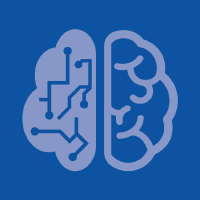Topic Menu
► Topic MenuTopic Editors


Big Data and Artificial Intelligence
Topic Information
Dear Colleagues,
The evolution of research in Big Data and artificial intelligence in recent years challenges almost all domains of human activity. The potential of artificial intelligence to act as a catalyst for all given business models, and the capacity of Big Data research to provide sophisticated data and services ecosystems at a global scale, provide a challenging context for scientific contributions and applied research. This Topic section promotes scientific dialogue for the added value of novel methodological approaches and research in the specified areas. Our interest is on the entire end-to-end spectrum of Big Data and artificial intelligence research, from social sciences to computer science including, strategic frameworks, models, and best practices, to sophisticated research related to radical innovation. The topics include, but are not limited to, the following indicative list:
- Enabling Technologies for Big Data and AI research:
- Data warehouses;
- Business intelligence;
- Machine learning;
- Neural networks;
- Natural language processing;
- Image processing;
- Bot technology;
- AI agents;
- Analytics and dashboards;
- Distributed computing;
- Edge computing,
- Methodologies, frameworks, and models for artificial intelligence and Big Data research:
- Towards sustainable development goals;
- As responses to social problems and challenges;
- For innovations in business, research, academia industry, and technology
- For theoretical foundations and contributions to the body of knowledge of AI and Big Data research,
- Best practices and use cases;
- Outcomes of R&D projects;
- Advanced data science analytics;
- Industry-government collaboration;
- Systems of information systems;
- Interoperability issues;
- Security and privacy issues;
- Ethics on Big Data and AI;
- Social impact of AI;
- Open data.
Prof. Dr. Miltiadis D. Lytras
Prof. Dr. Andreea Claudia Serban
Topic Editors
Keywords
- artificial intelligence
- big data
- machine learning
- open data
- decision making
Participating Journals
| Journal Name | Impact Factor | CiteScore | Launched Year | First Decision (median) | APC |
|---|---|---|---|---|---|

Big Data and Cognitive Computing
|
3.7 | 7.1 | 2017 | 25.3 Days | CHF 1800 |

Future Internet
|
2.8 | 7.1 | 2009 | 16.9 Days | CHF 1600 |

Information
|
2.4 | 6.9 | 2010 | 16.4 Days | CHF 1600 |

Remote Sensing
|
4.2 | 8.3 | 2009 | 23.9 Days | CHF 2700 |

Sustainability
|
3.3 | 6.8 | 2009 | 19.7 Days | CHF 2400 |

Preprints.org is a multidisciplinary platform offering a preprint service designed to facilitate the early sharing of your research. It supports and empowers your research journey from the very beginning.
MDPI Topics is collaborating with Preprints.org and has established a direct connection between MDPI journals and the platform. Authors are encouraged to take advantage of this opportunity by posting their preprints at Preprints.org prior to publication:
- Share your research immediately: disseminate your ideas prior to publication and establish priority for your work.
- Safeguard your intellectual contribution: Protect your ideas with a time-stamped preprint that serves as proof of your research timeline.
- Boost visibility and impact: Increase the reach and influence of your research by making it accessible to a global audience.
- Gain early feedback: Receive valuable input and insights from peers before submitting to a journal.
- Ensure broad indexing: Web of Science (Preprint Citation Index), Google Scholar, Crossref, SHARE, PrePubMed, Scilit and Europe PMC.
Related Topic
- Big Data and Artificial Intelligence, 2nd Volume (7 articles)

